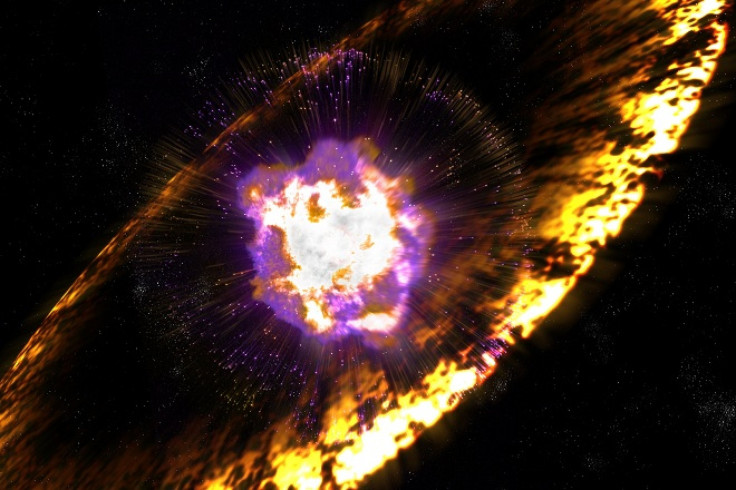Mystery Of Cosmic Ray Origin Solved: Fast-Moving Protons Forged In Supernovae

All of us are caught up in the ancient shock waves of exploding stars. New research confirms that the cosmic rays that bombard Earth are remnants of supernovae.
Scientists have long suspected that the cosmic rays hitting our planet come from the violent deaths of ancient stars, but had yet to find evidence to fully confirm it. Now, in a paper appearing in the journal Science on Friday, an international team of researchers detail how they uncovered the “smoking gun” -- or in this case, the smoking subatomic particle.
The question of the origin of cosmic rays has “really been one of the big unsolved puzzles in particle astrophysics,” Stefan Funk, the Stanford University astrophysicist who led the analysis of the data, told reporters at a press briefing on Thursday at the American Association for the Advancement of Science annual meeting in Boston.
For four years, Funk and his colleagues scrutinized two supernova remnants called IC 433 and W44, which are located within our Milky Way galaxy, using a telescope aboard the Fermi Gamma-ray Space Telescope currently orbiting Earth.
When a star explodes, the resulting shock wave accelerates protons to near the speed of light, creating gamma rays.
"The energies of these protons are far beyond what the most powerful particle colliders on Earth can produce," Funk said in a statement Thursday. "In the last century, we've learned a lot about cosmic rays as they arrive here. We've even had strong suspicions about the source of their acceleration, but we haven't had unambiguous evidence to back them up until recently."
About 90 percent of the cosmic rays that hit Earth are made up of protons, but scientists couldn’t tell whether these superfast protons were accelerated by energy from supernovae in the Milky Way or from black holes outside our galaxy. There are lots of different ways to make gamma radiation, and it can be hard to tell which process is responsible just by looking at the rays.
Part of the problem is that the positively charged protons interact with magnetic fields in such a way that it’s impossible to trace them back to their source. Scientists can’t tell if a gamma ray entering a detector is a high-energy proton or a high-energy electron.
To see if supernovae could be the source of cosmic rays, the scientists were looking for traces of pions, a subatomic particle made when cosmic rays interact with the dust and gas around a supernova. Pions quickly decay into gamma-ray photons, little high-energy particles of light that are unaffected by magnetic fields.
When Funk and his colleagues looked directly at the two supernovae, they found an energetic signature consistent with pion decay.
"Until now, we had only theoretical calculations and common sense to guide us in the belief that cosmic rays were generated in supernova remnants," Jerry Ostriker, a Columbia University astrophysicist unaffiliated with the current study, said in a statement Thursday. "The direct detection of pion-decay signatures in supernova remnants closes the loop and provides dramatic observational evidence for a significant component of cosmic rays."
SOURCE: Ackermann et al. “Detection of the Characteristic Pion-Decay Signature in Supernova Remnants.” Science 339: 807-811, 15 February 2013.
© Copyright IBTimes 2024. All rights reserved.











